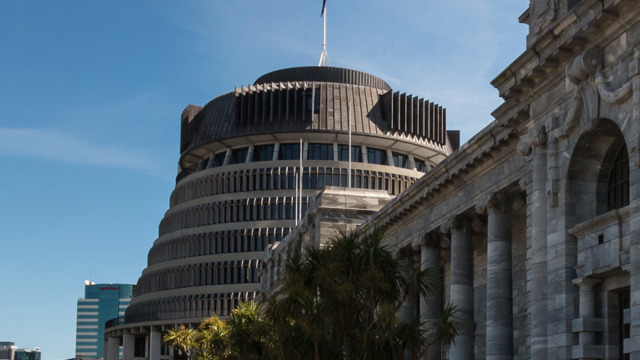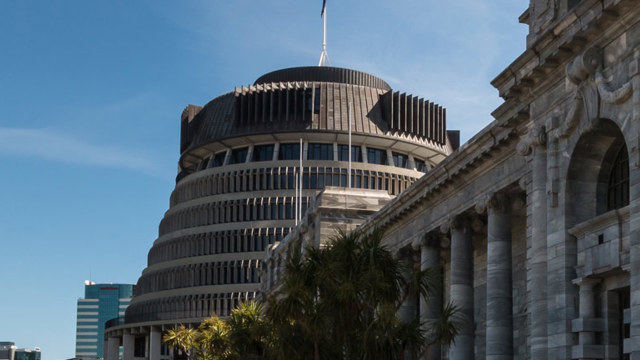Matter of opinion
Transformation in the Machinery of Government - the Māori Health Authority
The Government is on track for two significant new health organisations, the Māori Health Authority and Health New Zealand, to "go live" by July 2022. The appointment process for interim boards is underway with both organisations to operate as departmental agencies pending legislation that will formalise the new structures, due to come into effect by the middle of next year.
Health New Zealand is likely to be established under the Crown Entities Act 2004 but the formal legal status of the Māori Health Authority is, rightly, still under consideration. A Steering Group selected and led by Sir Mason Durie has agreed a Māori-centred process for identifying nominees for the Māori Health Authority interim Board and will also advise on an appropriate structure that will best deliver on its objectives.
The structural design is only one aspect that will deliver on the aims of the reforms, with funding commitment, the extent of commissioning powers and arrangements with other organisations, including Māori partnership boards, also considered to be critical. However, the form of the entity provides the all-important foundational basis for its future operation and success. As starkly identified in the 2019 Waitangi Tribunal stage one report in the Health Services and Outcomes Kaupapa Inquiry (Wai 2575), current systems have perpetuated and exacerbated, rather than addressed, severe health inequities experienced by Māori.
The Ministry of Health website states that the Māori Health Authority is intended to be "a ground-breaking organisation" designed to give Māori a vehicle to shape health outcomes for Māori and to give effect to Te Tiriti o Waitangi. To the extent it is established as a government body, we may, for the first time, see a public sector institution co-designed with, by and for Māori, representing a paradigm shift in public sector arrangements in New Zealand.
From a public law perspective, the structural options for government entities are not limitless, with the key options being departments (including departmental agencies), Crown entities and Public Finance Act organisations, and for commercial activities, State-owned enterprises and Mixed Ownership Model companies. It is always possible for Parliament to legislate for a new entity. Of the current options available, the Crown entity format arguably provides sufficient flexibility for innovative design as any legislation establishing the Māori Health Authority can override requirements in the Crown Entities Act. In this respect the only constraint is, arguably, the willingness of officials and Ministers to embrace new approaches and ideas as proposed by the Steering Group and others.
Crown entities are a relatively unique model internationally, providing an arms' length arrangement between the entity and the responsible Minister. It is a structure that provides an entity with a degree of independence (which varies depending on the category of Crown entity), and minimises political interference while ensuring accountability for use of public funds. Of note, some claimants in the Wai 2575 Waitangi Tribunal inquiry proposed that a Māori Health Authority be established as an independent Crown entity. The Tribunal made an interim recommendation that the Crown commit to exploring the concept of a stand-alone Māori primary health authority.
The establishment of a Māori Health Authority was further considered as part of the Health and Disability System Review, with a report released in 2020 recommending a relatively watered-down model, without commissioning power, and to operate as a departmental agency. However, an alternative proposal, supported by the majority of the review panel members and the entire Māori Expert Advisory Group (which advised the review panel) was also included in the report. The alternative option called for a Māori-owned entity with broader powers, including commissioning powers, than those proposed in the formal recommendation. As an example entity, reference was made to Te Mātāwai, - an independent statutory entity established by the Te Ture mō Te Reo Māori 2016 (Māori Language Act 2016) to provide leadership on behalf of iwi and Māori in their role as kaitiaki of te reo Māori.
The Government's health reform announcements in April 2020 largely endorsed the alternative approach in the Health and Disability System Review report, signalling a commitment to bring about transformational change to health provision for Māori. However, while the design is still under consideration, the Ministry of Health website suggests that the Māori Health Authority will be a government entity rather than separate from the Crown.
It is interesting to compare the statutory requirements for Te Mātāwai, a statutory entity receiving public funds that is not Crown-owned, with the Crown entity structure. Many of the provisions in the Te Mātāwai establishment Act mirror those under the Crown Entity Act, including duties of board members, reporting requirements and oversight by the Auditor General. However, there are also important differences. Under the Crown Entity Act a Minister appoints Board members and can require changes to a statement of intent among other things. While there are limits on how a Minister directs a Crown entity, there is still the ability to do so depending on the type of Crown entity involved. For Te Mātāwai, of the 13 Board members, seven are selected by iwi clusters, and four by Te Teo Tukutuku clusters (as specified in the Act), and only two are appointed by the Minister. The Minister has a power to review operations but otherwise is not able to require specific actions to be taken. Other aspects of note in the Te Mātāwai legislation include the Crown's acknowledgement of the detrimental effects of its past policies and practices, principles and guidelines reflecting Te Tiriti obligations and appointment procedures that enable broader iwi involvement.
Those working on the organisational structure may see an opportunity here to reflect aspects of the Te Mātāwai design in a Crown entity structure through specific provisions in the Māori Health Authority establishment Act that override the standard requirements in the Crown Entity Act. To allow Board selection by iwi is one possible shift among others that could better enable a Māori-led response to health inequities. At the very least, statutory appointment processes would likely be expected to provide for an iwi led process for identifying nominees, as has occurred through the Steering Group for the selection of the interim Board. There are also opportunities for designing new ways of interacting with other departments and government agencies as well as processes for enabling broader iwi engagement.
The establishment of the Māori Health Authority could potentially be one of the most progressive actions of the current government, including from a public law perspective. Early indications suggest the Government is listening to iwi and are genuinely open to embracing alternative and co-design options for delivering and improving outcomes for Māori and, by extension, for all New Zealanders.











